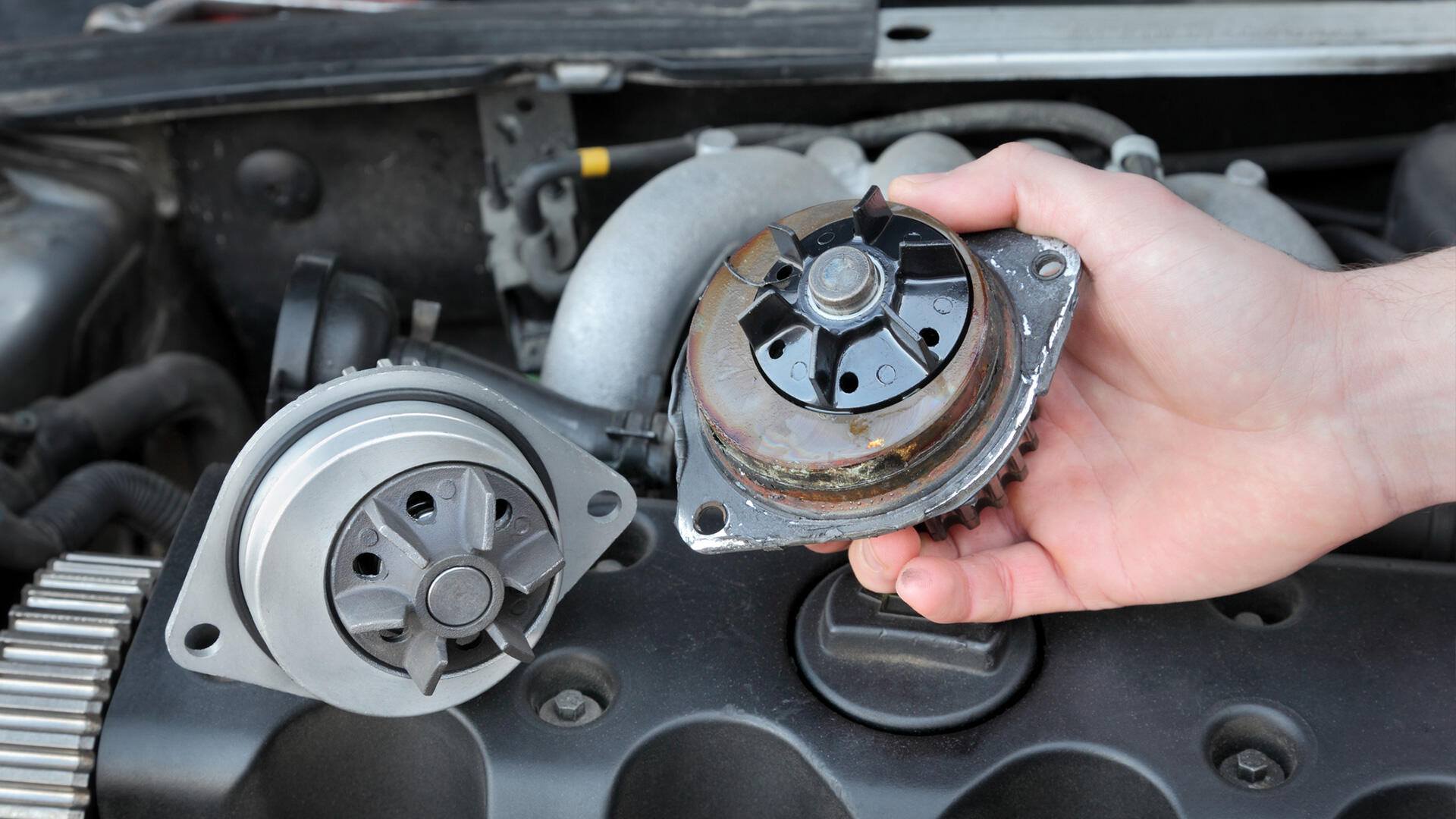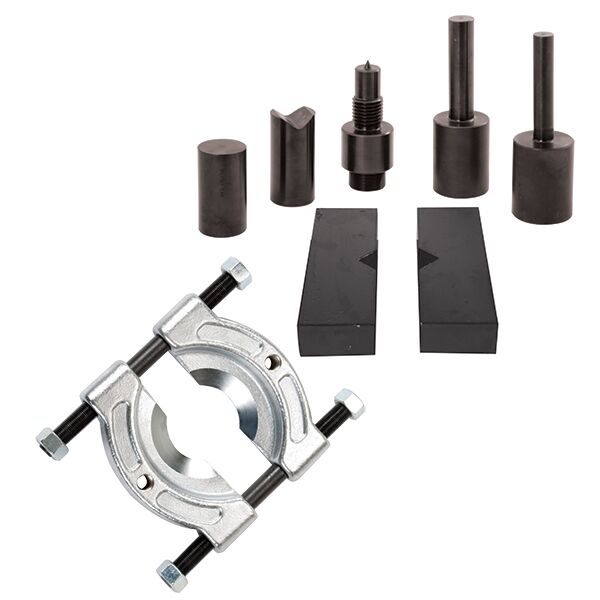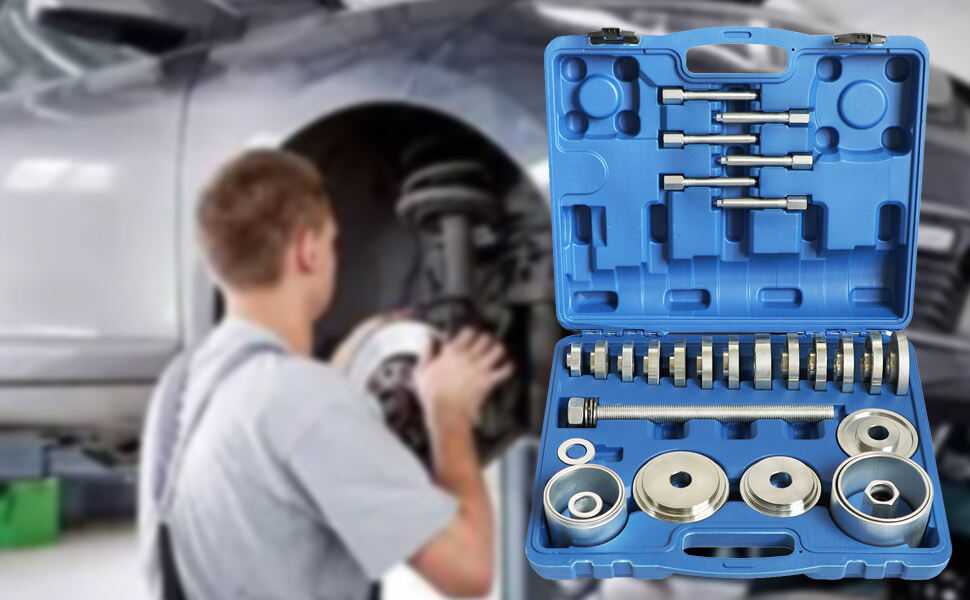Coolant pump bearings are the unsung heroes of your engine’s cooling system, enabling smooth coolant circulation. When these bearings wear out, the pump seizes, triggering rapid overheating, coolant leaks, and potential engine damage. Common causes include:
Contaminated coolant: Abrasive particles accelerate bearing wear.
High-mileage stress: Bearings degrade after 80,000–120,000 miles.
Improper belt tension: Excessive load strains bearings.
Traditional methods like hammering bearings out risk damaging the pump housing. HTL’s hydraulic bearing press kits eliminate these risks with precision force control, ensuring safe, efficient replacements.
Whining or grinding noises from the pump area.
Coolant leaks around the pump shaft.
Temperature gauge spikes during idle or low-speed driving.
Visible wobble in the pump pulley.

HTL’s kits are engineered for coolant pump repairs:
Adjustable hydraulic pressure: 5–20 tons of controlled force.
Bearing-specific adapters: Fit common pump bearings (e.g., 6203, 6305).
Laser alignment guides: Ensure bearings press in straight, preventing cocking.
Heat-resistant sleeves: Protect aluminum pump housings during press fits.

1. Remove the Coolant Pump
Drain coolant and disconnect hoses.
Loosen the serpentine belt and unbolt the pump.
2. Extract the Old Bearing
Mount the pump in HTL’s press fixture.
Attach the bearing removal adapter and apply gradual hydraulic pressure (5–10 tons).
Catch the bearing as it releases to avoid housing damage.
3. Clean and Inspect
Degrease the pump housing and shaft.
Check the shaft for scoring; polish with 600-grit emery cloth if needed.
4. Press in the New Bearing
Apply anti-seize lubricant to the bearing seat.
Align the bearing with HTL’s laser guide and press it in at 8–12 tons.
Verify the bearing spins freely without binding.
5. Reassemble and Test
Reinstall the pump and refill coolant.
Start the engine and check for leaks or abnormal noises.
Monitor temperature during a test drive.

| Factor | Hammer/Drift Punch | HTL Hydraulic Press |
|---|---|---|
| Bearing Damage Risk | High (misalignment cracks bearings) | Low (controlled force) |
| Housing Integrity | Often cracked or distorted | Preserved with guided force |
| Installation Time | 30–45 minutes (trial and error) | 10–15 minutes (precision setup) |
| Tool Cost Efficiency | Low (frequent replacement parts) | High (durable, multi-use adapters) |
Dry pressing: Always lubricate bearings to prevent galling.
Over-pressurizing: Exceeding 15 tons can collapse aluminum housings.
Ignoring seal inspection: Replace shaft seals while the pump is disassembled.
Prevent collateral damage: Avoid cracked housings or distorted shafts.
Boost productivity: Standardize repairs across technicians.
Future-proofing: Kits adapt to electric coolant pumps in hybrid/EVs.
Coolant pump bearing replacement isn’t just a fix—it’s a safeguard against engine disasters. HTL’s hydraulic press kits empower shops to execute flawless repairs, keeping engines cool and customers confident.
Equip your shop with HTL’s hydraulic press kits. [Request a Demo] or download our coolant pump repair guide today!
Q: Can HTL’s press handle oversized bearings?
A: Yes—custom adapters are available for bearings up to 100 mm OD.
Q: How often should coolant pumps be inspected?
A: Every 60,000 miles or during timing belt replacements.
Q: Do electric coolant pumps require special tools?
A: HTL offers insulated adapters for EV/hybrid pump servicing.
With HTL’s tools, every bearing replacement becomes a step toward cooler, longer-lasting engines. 🚗🔧❄️
